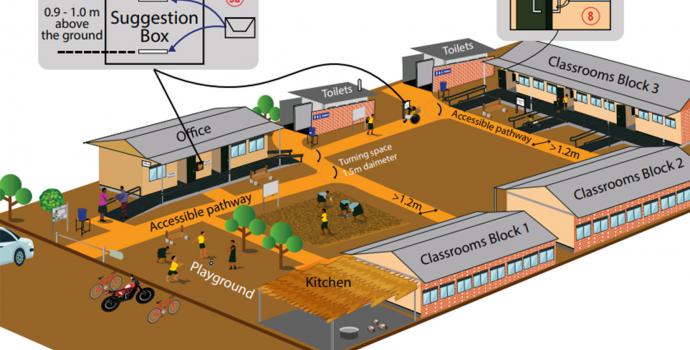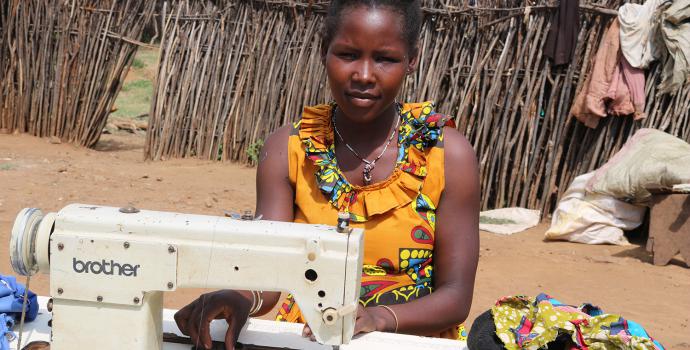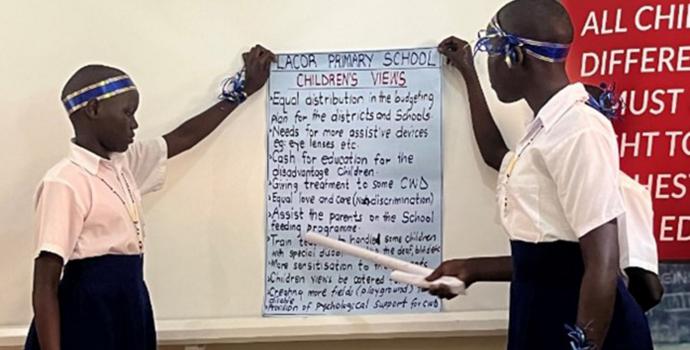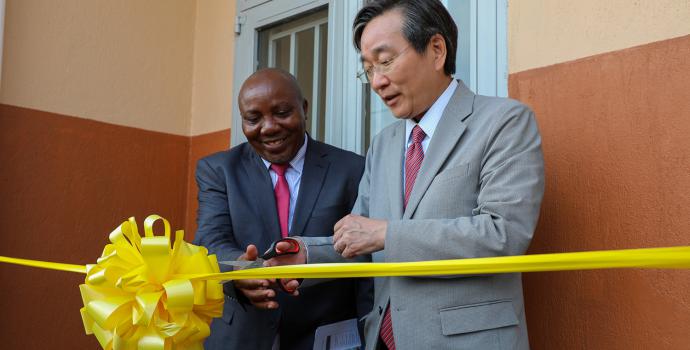"We were surrounded by water": Thousands displaced as floods devastate western Uganda
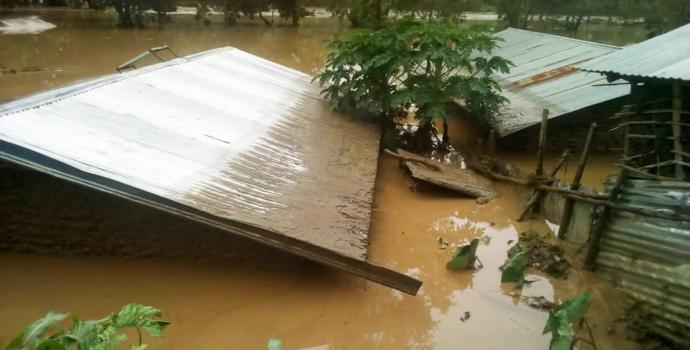
It was 2am when Jimmy Byaruhaga was startled awake by the sound of flowing water.
“I immediately ran out of the house to check, only to find that we were already surrounded by water from all sides, leaving us right in the middle.”
Jimmy rushed back into the house to wake up his wife and children. He found a rope, asked his children to hold on tightly, and then pulled them to safety on a small piece of higher ground nearby.
They spent the rest of the night there, cold and scared as the flood water rose higher all around them.
In the past few weeks, tens of thousands of people in western Uganda have been displaced by severe flooding – the worst in memory, Jimmy says. In Kasese district, where he lives, the floods have washed away homes and schools, damaged health clinics, destroyed farmland and killed livestock.
“It’s a disaster,” says Samuel Mukirane, Save the Children’s regional area manager. “There are thousands of children who have been displaced. Many are sleeping in school classrooms or churches. There aren’t enough facilities – in one site there is just one toilet for 1,000 people. Children don’t have enough food, clothes or mosquito nets. This comes at the same time that communities are trying to prevent Covid-19 and it increases the risk of it spreading.”
Thanks to emergency funding from donors such as the Canadian Humanitarian Assistance Fund (CHAF), Save the Children’s team in Kasese has distributed relief aid such as jerrycans and buckets for storing safe water, as well as cooking pans, cups and clothes. The team plans to construct toilets in emergency health centres, and step up information campaigns over local radio.
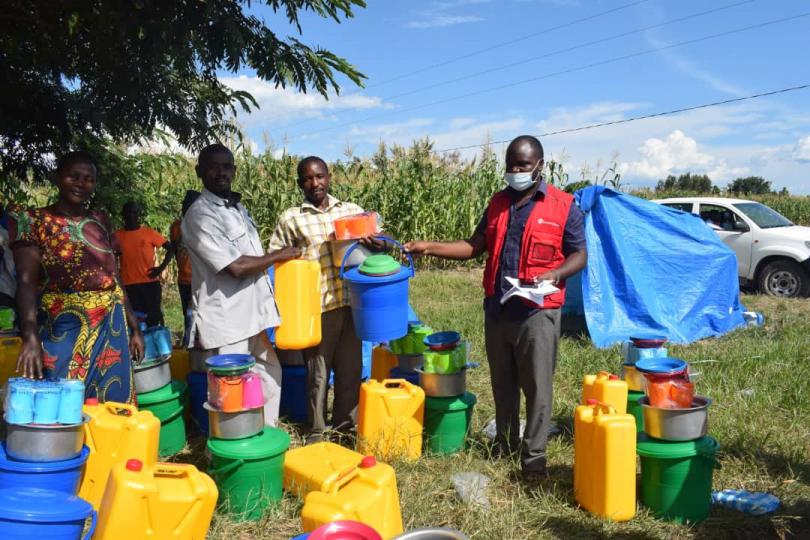
A few days later - after Jimmy and the family were evacuated to shelter at a local school - he returned to their house to try and get some food. Suddenly the water level rose again. He managed to grab hold of a tree and pull himself to safety just in time. But he could only watch helplessly as everything in the house – all the family's possessions – were washed away.
Investment in long-term disaster management is needed
Save the Children has been running a Disaster Risk Reduction (DRR) project in rural villages in western Uganda for several years. With support from the government of Japan, the project has worked closely with communities to set up Village Disaster Management Committees (VDMCs), build bridges and flood protection, and establish emergency warning systems such as community radio stations.
Jimmy credits the emergency training and evacuation drills carried out under the project for the quick thinking that saved his and his family’s lives.
Local officials say the community radio stations in Karusandara (pictured below) and Isule saved lives by quickly alerting people as the floods spread, helping people to escape in time.
Read: Case study -the response of community structures during the Kasese floods
Members of the VDMCs also quickly moved around their communities, using megaphones to wake families up and coordinate evacuations to pre-identified schools and churches.
Joseline Kabugho was fast asleep when she heard someone shouting. “I saw some members of the VDMC outside. They told me to move from my house and run to St. Mark’s primary school.”
It was just in time, she says. “Just when I and my children stepped out of the house, the water entered. I went back the following day to check but all my property had been washed away and the iron sheets were off the roof. As I talk now, all I have is my two children and the clothes I am wearing.”
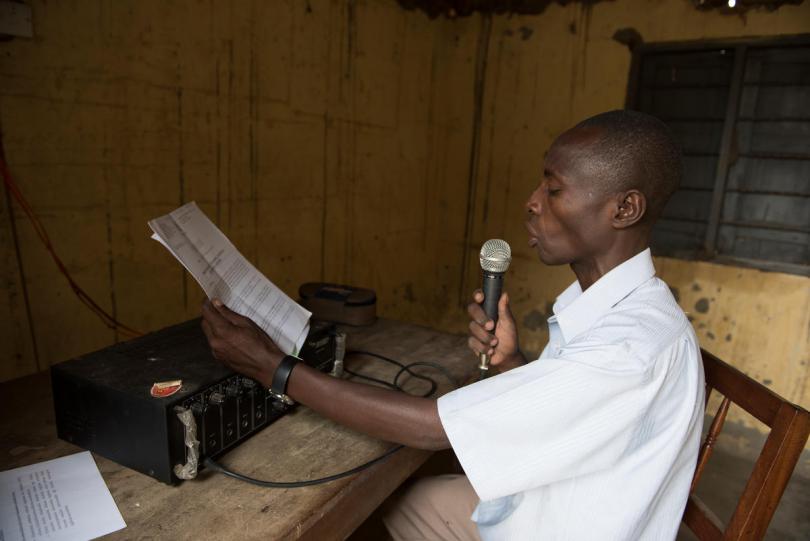
Another woman, Georgina, says she was cut off from her young child as the waters rose. One of the VDMC members heard her crying and managed to get to her house and bring the child to safety.
“I am very happy and thankful to Mr. Kalule (of the VDMC) for having saved my child because I don’t know if I would have managed by myself,” she says.
Kiiza Yohana has chaired the local council in Kinyayobyo village for the past seven years. Through the DRR project the village has constructed gabions – support structures made of rocks enmeshed in wire – along the river. Bamboo and trees have been planted alongside them, which has now grown into thick natural vegetation that further protects the riverbank and village from flooding.
Kiiza says that in the latest flooding some of the gabions were submerged and dislocated, but they still managed to reduce the impact of the floods. He says that no homes in the village were destroyed, no families were displaced and farmers’ fields and gardens survived.
“If it weren’t for the gabions, we had planned to shift a long time ago. But we thank Save the Children for the efforts that it put in, to ensure that the risk of flooding is reduced.”
More heavy flooding is expected in the coming weeks, but the VDMCs are also working to re-open roads and clean up affected houses, and mobilising relief aid to affected families.
Below: Joseline outside her tent at the local school, which is now an evacuation site


